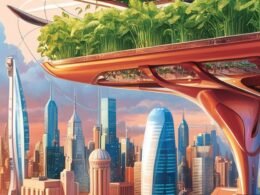The Ghanaian population has been at war with illegal mining for over a decade. Much is known, said, and written about the menace. Successive governments have taken action to curb it, but the problem persists.
As the destruction of the environment escalates, our existence is at stake. That is why the citizenry expects governments to get tougher and tougher in flushing out the illegal miners. However, the more they are arrested, injured, or chased out, they return in droves to continue with their activities. It is time we revisited the situation.
There is an interconnection between population, environment, and poverty. An increasing population, including unemployed youth, exerts pressure on the environment. A fractured environment, in turn, is a potential cause of an impoverished population. To make a living, the poor inflict more harm on the environment—land, water, air, fauna, and flora. From this analysis, a depleted environment exacerbates poverty in society.
Here is a case where able-bodied persons living in abject poverty are sitting by a pot of gold. More so when there is a chain of persons—financiers, buyers, implement and machinery suppliers—behind the scenes. With decent jobs and sustainable jobs hard to come by, the youth are tempted to dig the ground for gold. This is not to justify people’s insatiable desire for wealth or to condone illegal mining.
Hunger is painful. Poverty is ignoble, disgraceful, and frustrating. Despite that, illegal mining must stop. But where should illegal miners turn to for daily bread? There should be a solution. Before unveiling a proposal, let us watch this documentary produced about 50 years ago.
“We are in 1975. The location is the Krobo-Akwamu-Osudoku enclave. We see a textile factory at Akosombo on the west bank of the River Volta. The factory runs three shifts. Dotted along the road, from Akosombo through Kpong to Somanya, are bus stops where morning, afternoon, and night shift workers alight from or enter vehicles, in turns, to and from the factory. We don’t know how much they earn, but we hear of occasional packages of half-piece or full pieces of cloth that bring smiles to the faces of workers’ spouses and parents. Commercial activities are flourishing.
At the southern end of the enclave, there is another factory at Asutsuare. It is a sugar factory managed by Ghana Sugar Estates Limited (GHASEL). Apart from management, technical, factory, and farm workers, there’s an opportunity for outgrowers to cultivate sugar cane to feed the factory. We see tractors pulling trailers of harvested canes from the farms to the factory. It’s admirable to see Madam Akuvi, operating a tractor with a dozen trailers behind her. There’s a distillery too, utilizing the by-product, molasses, to produce alcohol.
From the documentary, we can identify two categories of people who benefit indirectly from the factory. First, alcohol sellers. They buy the raw alcohol called Goku, named so after the head of the distillery unit, and blend it themselves to make different brands of liquor. To make schnapps, whisky, or gin, buy a concentrate of the brand, a recipe from Holland, and pour it into a gallon of Goku, shake it vigorously, and voila.
The second beneficiaries are students. They work on out-grower farms on weekends and vacations to earn pocket money. Some pay fees by themselves with the money earned from the farms.
Before the documentary ends, we receive information that some workers of Juapong Textiles Limited also reside in the location from where they commute by the company bus daily to work. As the documentary ends, the unspoken impression is that the local economy is booming.”
This is a clear example of a 24-hour economy. In addition to whatever actions the government takes to end illegal mining, it is proposed that industries be established to absorb the teeming unemployed youth. We may consider factories like Offin Source Tomato Cannery, Ankobra Cocoa Processing Factory, and Pra River West Bank Garment Factory. Rough estimates suggest that a factory running two shifts will reduce the number of illegal miners by half, and a three-shift system will reduce the number by 75 percent.
Such a step, akin to ‘one river body, one factory’ or ‘one district, one factory,’ together with other initiatives, will create sustainable jobs for the people. The impact will be great. Poverty will be drastically reduced. Turbid water bodies will become clean, and forest reserves will breathe. We will move out of the vexing triangle of population, environment, and poverty, Dieu Merci.
Written by Gabriel Adukpo









